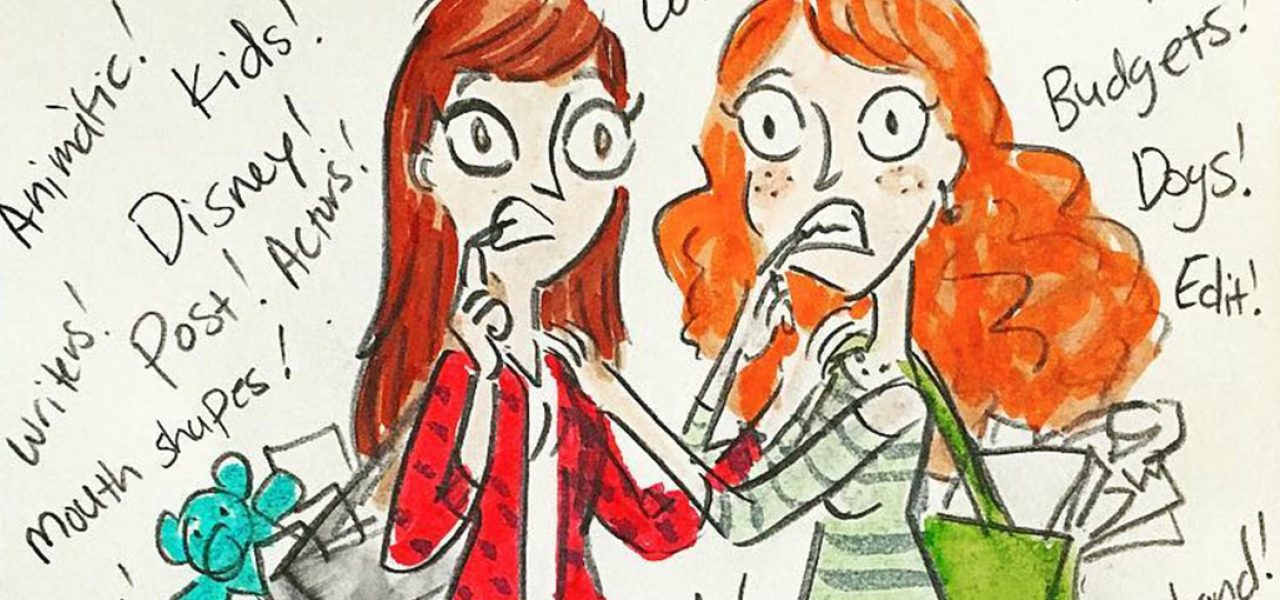
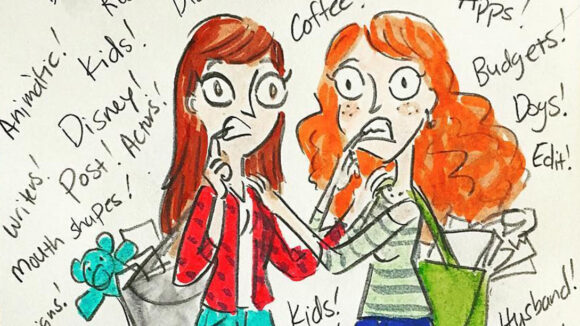
Moms In The Hollywood Animation Industry Speak Out
Slowly but surely, Hollywood animation is becoming more inclusive towards women: female leaders are helming big productions, like Kung Fu Panda 2’s Jennifer Yuh Nelson and Steven Universe’s Rebecca Sugar, and the challenges that women face in the industry are being discussed openly. But within this conversation on gender equality, there’s a theme largely left undiscussed: motherhood.
Women can’t “have it all” – while one could argue this stigma is old-fashioned, it’d be naive to think women’s careers today are not still influenced by it. When history has repeatedly told women this, it’s difficult for them to envision themselves in higher-up creative roles. And that’s a problem, because when women stay away from those roles, half of society’s voice remains underrepresented in Hollywood’s (globally influential) productions.
Cartoon Brew spoke to eight American women in creative leadership positions in the animation industry, who are at the top of their field while also being a mom: Cecilia Aranovich (DC Super Hero Girls, Bob’s Burgers), Elizabeth Ito (Adventure Time, Hotel Transylvania), Carol Wyatt (Rick and Morty, Over the Garden Wall, The Simpsons), Claire Keane (Frozen, Tangled), Rachelle Lambden (Kubo and the Two Strings, Frankenweenie), Kat Good (Penn Zero: Part-Time Hero, Kung Fu Panda), Brenda Chapman (Brave, The Prince of Egypt, The Lion King), and Aliki Theofilopoulos (Descendants: Wicked World, Phineas and Ferb), as well as Women in Animation co-president Marge Dean (general manager at Stoopid Buddy Stoodios). The creative leaders’ kids range from one to 19 years old.
Cartoon Brew talked with the moms, via Skype, about the difficulties they encounter, how they make it work, and what is needed to let women, their work, and the industry thrive.
It’s the first time this topic has been discussed publicly at length within the animation industry, and it’s incredibly important that it’s happening. “A lot of women are hesitant to start a family because they think it’s a career killer,” Cecilia Aranovich told Cartoon Brew. This piece aims to prove that it isn’t, or shouldn’t be an either-or proposition for women in the industry.
(A note: While many issues related to motherhood are universal, government policies about maternity leave and the culture of mothers-in-the-workplace varies from country to country. To maintain a consistent focus, this piece looks at women working in the American animation industry.)
A women’s issue?
Fathers and mothers are equally important in a child’s life, all the moms affirmed. But while equally important, it’s not the men who have worries about combining their career with kids.
At the time Brenda Chapman had her child, 18 years ago, she had no moms to look up to as role models in feature animation – pretty much all of the directors and heads of story were male. There were plenty of female animators and clean-up artists having children, she recalls, “but they would take a big chunk of time off, and they wouldn’t go much further [in their career].” When Kat Good had her first child five years ago, not much had changed. She wondered, “that there aren’t [moms in creative leadership], does it mean that I can’t?”
For some reason, when we talk about juggling work and kids, it’s automatically thought of as a women’s issue. Aliki Theofilopoulos recalled a time she had to work late on Phineas and Ferb, while simultaneously having to pick up and take care of her kids that evening. “I don’t remember exactly what was going on, but I remember I was faced with the challenges that I’m usually faced with, with juggling my kids that I love so much, and my career that I love so much. And someone said to me, ‘You need a wife.’ Because typically, the roles are that the dad is working and the mom is at home.”
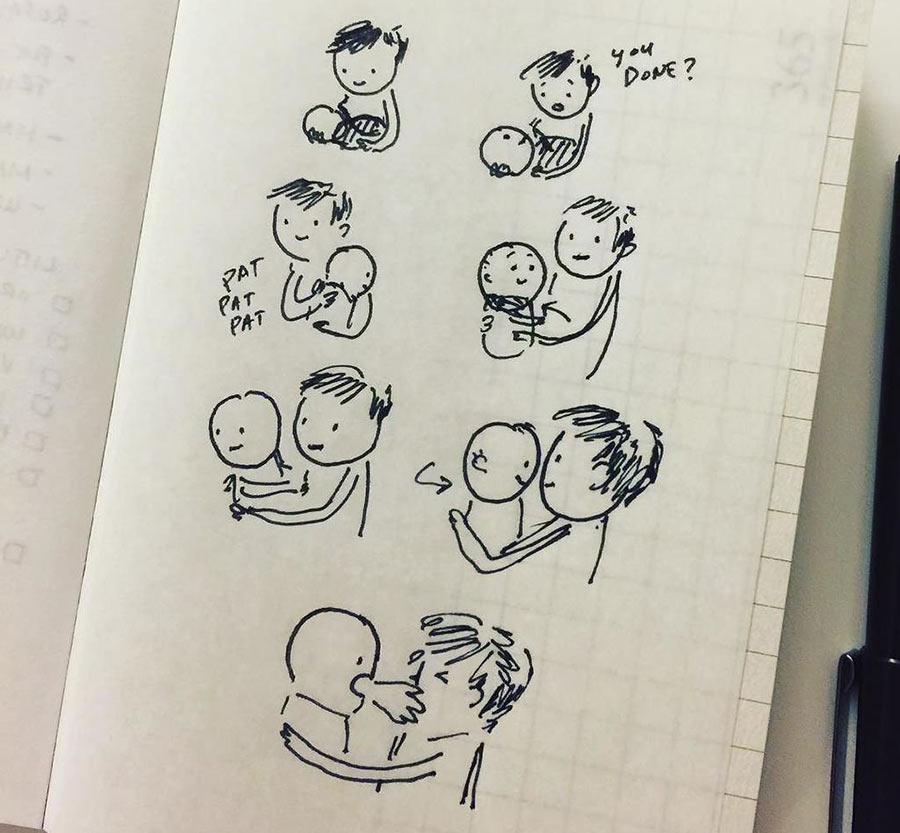
Fearing the public conversation
Theofilopoulos recalled a time she spoke at Calarts, where afterwards a couple girls pulled her aside to speak privately about motherhood and working in animation. “They were afraid to ask this question in front of their peers…And I remember thinking, I don’t think any of the guys would have felt they needed to secretly pull somebody on the side and ask if it’s okay to become a parent and have a career in animation. I couldn’t even imagine that.”
This fear that all moms mentioned seems to be rooted in a bigger problem that women face. Continued Theofilopoulos: “As women we’re coming up from behind a little bit. Things are changing, but until now, we’ve had to work harder, we’ve had to prove ourselves even more in the room, we’ve had to do even more to be able to say, yes, we can hang with the guys. So now that we’ve worked so hard to hang with the guys, to [then] be like, ‘Well I’m going to go nurse my baby,’ or ‘I’m going to my kids’ Halloween parade’…I think there’s a tendency to feel embarrassed, and to want to hide that.”
It’s important to speak up, Carol Wyatt said, when peers say things like, ‘She’s going to have a family soon; I don’t know if she’ll have the time for this job.’ “They don’t realize that they’re doing this…And I’m there reminding them, ‘You know, you guys…You can’t say that.’ And they’re like, ‘Oh yeah, I forgot.’ It’s just such an old culture.”
Factors that preserve the status quo
It’s intrinsic to Western culture that women are the primary parent. Changing this status quo doesn’t happen overnight, and it doesn’t happen at all if we don’t sincerely examine some factors that preserve the status quo.
Available and affordable child care is key, Women in Animation president Marge Dean explained. “Especially when you’re starting out…if you have to pay half your paycheck to somebody else to take care of your kid, sometimes it doesn’t seem to really be worth it at that point.” According to Dean, the odds are that the guy in the family has the ability to make more money than the woman, because of the gender pay gap that’s still prevalent. “And it just becomes logical. You’re like, ‘Well, we need the money, so…’ It further feeds the dynamic.”
Besides financial reasons, biological reasons come into play as well. There’s an undeniable physical bond that mother and child shared during pregnancy, and that continues during breastfeeding. Aranovich explained, “[While breastfeeding] the baby spends a lot of time with you. You’re the main caregiver for the baby, because you’re pretty much feeding the baby at all times.”
Elizabeth Ito said that while paid maternity leave is great and very necessary, in some ways, those first months at home make it more self-evident for moms to continue staying home. Aranovich agreed and added, “Once [the kids] start being more independent – you know, eating on their own and walking and stuff – then there’s a grey area. I think that’s when moms can pretty much split responsibility…But whether we want to admit it or not, at least during the first year, a lot of the responsibility falls on the mother.”
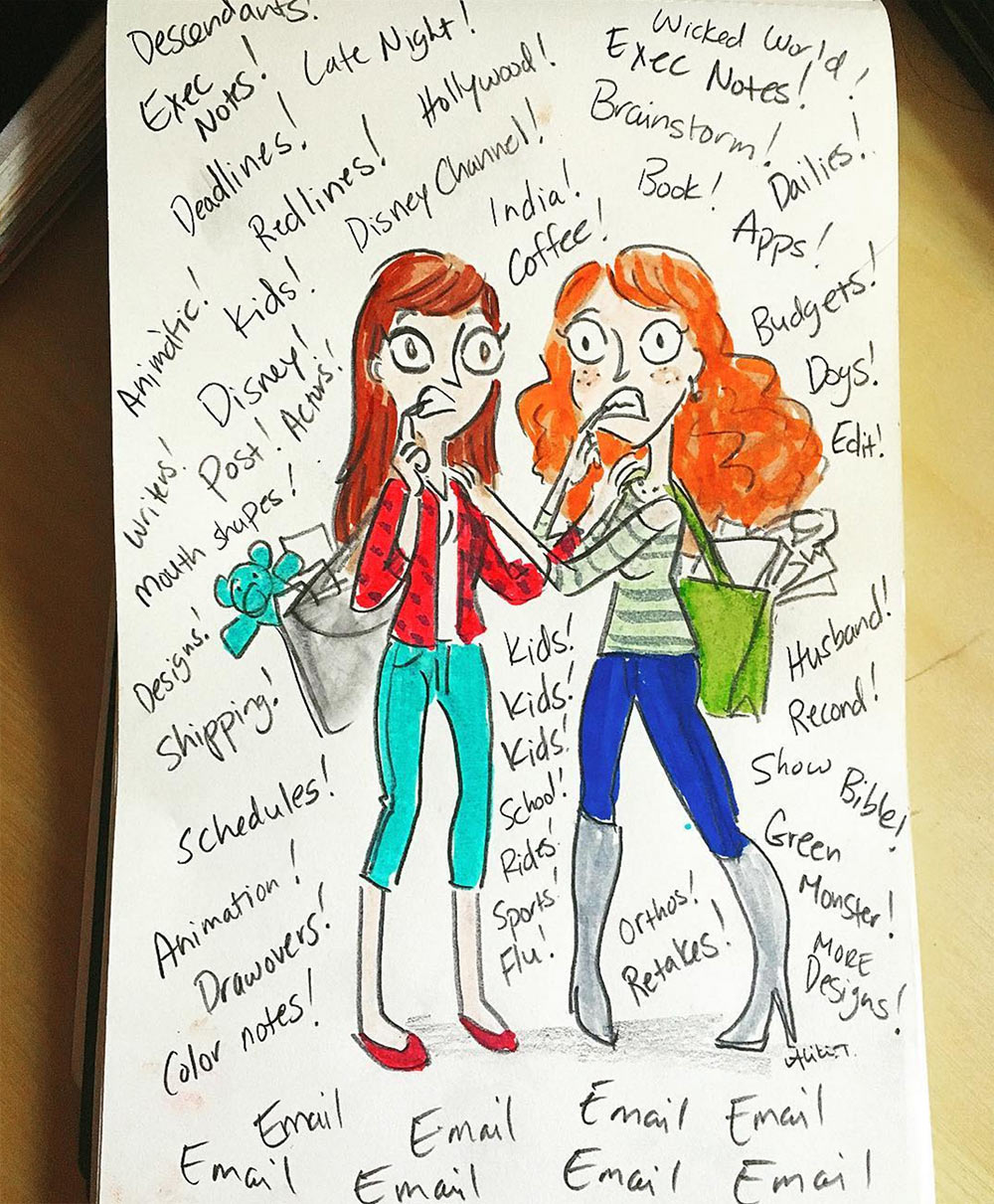
Difficulties that working moms face
“I thought it would be so easy,” Wyatt recalled with laughter of the arrival of her first child (out of five). “I thought, I can put my daughter in a little basket next to me and I can work. It was a shock.”
Getting a phone call from school to come pick up your kid in the midst of a meeting, dealing with health problems due to your toddler picking up viruses at preschool, or something as simple as celebrating Halloween on a weekday with your kids before it gets dark – being your child’s primary caretaker while holding a demanding job can be quite the juggling act.
The difficulties already start during pregnancy. Wyatt recalled an experience, around 20 years ago, when she wasn’t hired because she was pregnant. “They actually said so – which is illegal, but they said it anyway. I thought, ‘That’s kind of weird…I don’t think you can say that out loud.’ I just went somewhere else.”
Ito added it’s especially hard in animation because it’s such a project-based industry. “There’s just this time crunch of like, ‘Oh well, if you’re not available during this period of time you’re not going to be able to work on that project.’”
Then, during maternity leave, it’s easy to start feeling isolated, and some women fall into a depression. Chapman recalled her time at home with her newborn daughter, where the connection Chapman still had to her career – her comfort zone – kept her sane. “You feel, ‘Ah, okay, I’m still me – I haven’t just become a milk cow.’ Because sometimes I did have a moment of depression – but I think it was just being overwhelmed and tired – when I was trying to pump breast milk, and you’re sitting there, and suddenly you feel like you’re this physical thing that needs to exist for this child to survive. And it doesn’t matter who you are, what you’ve done… You’re still sitting here, like a cow, having your breasts pumped for milking.”
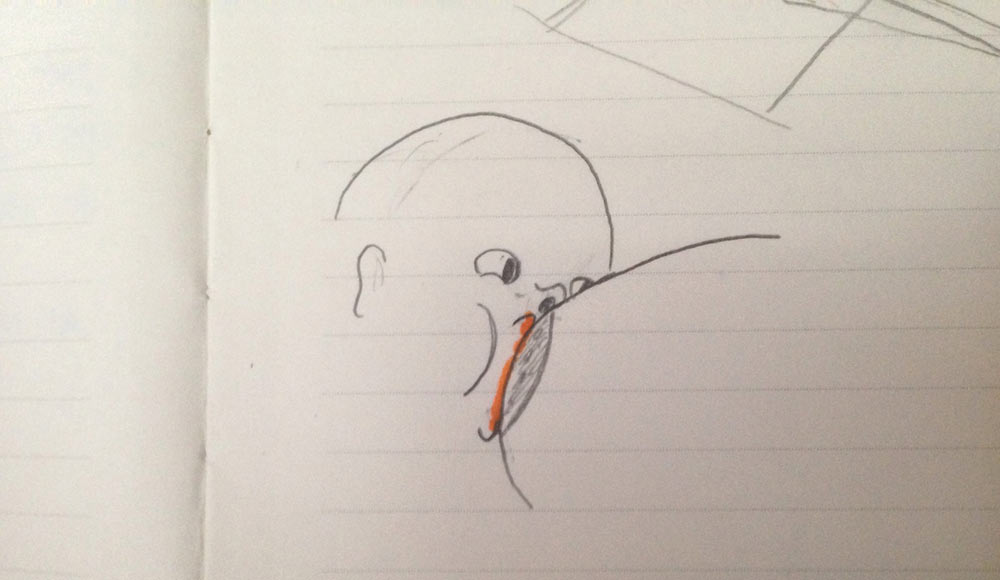
Upon returning back to work, taking regular breaks to pump milk is hard to get used to, Ito mentioned. It usually takes up to half an hour, and has to happen every few hours.
In general, with kids comes tough time management. There’s less time for social work activities and doing overtime, both of which are usually key factors in climbing the career ladder. Rachelle Lambden shared, “It’s constantly a challenge, because you feel like you’re competing with people who aren’t necessarily dealing with the restrictions that you are.”
The disadvantages that moms have compared to dads or childless artists creates a fear in young women. When Good became pregnant a second time, just three months after returning to work, she was anxious to tell management. “I hoped that I’m not going to be penalized for it… And, yeah, it was scary. It was really scary. And I actually have a friend who just found out she’s pregnant, and she’s terrified. Because she doesn’t know what it means [for her career].”
But above all, numerous moms relayed, it’s difficult dealing with the ‘mommy guilt.’ Keane explained that she was haunted by this feeling for a while when employing a nanny, but soon realized, “when I’m trying to do both – when I’m trying to work and have the baby right behind me – I’m not being a good mom, and I’m also not doing my job well. So it’s better if I can focus on these things separately.”
It’s hard, but it’s possible
“You know, being a woman in this industry, there’s a lot of things you have to reinvent anyway,” Lambden said. “So if it’s a new path – you’ve faced this before; it doesn’t mean it can’t be done.”
Ito encouraged young women wanting to have a family: “You’ll be okay, but you just need to allow yourself to have all these big feelings that you have once you become a mom.”
Asked about how the moms manage to make it work, they all emphasized the need for people that you trust to take care of your kids. Whether it’s your husband who is a partner in crime, family members, a nanny, or daycare – you can’t do it alone, and you don’t have to.
Theofilopoulos recalled a piece of advice she had received as a young mom, saying “My children need love. They need love from me, but they need love from everywhere. They can get love from my mom, they can get love from their dad, they can get love from each other. They just need a life full of love. So I try to make sure and provide that, even when I’m not a part of it.”
Living close to work can make time management a bit easier, but generally you just have to learn to be very efficient with your time. “It’s not like I was lazy or anything before,” Ito clarified, “but you definitely try to make the most of the hours that you’re in the office to get all the work done that you need to.” Aranovich added it can be as easy as making sure that your team has enough work to do the following morning, if you know that you’re going to come in late.
Theofilopoulos also advised moms to look at their weekly schedule and make sure that there’s a balance between focusing on their kids and focusing on their work. Lambden noted, “Go with what you’re capable of… Be kind to yourself, with what you can do, when you can.”
Learning to let go is actually really beneficial for animation professionals, Ito added. “Don’t get too stuck or hung up on something if it’s not coming out perfect – just keep going. I learned a lot about work that way.”
And sometimes, something as simple as sharing your feelings with colleagues can mean a lot. “Talk to other moms about what it’s like, and sort of commiserate about it,” Ito advised. “Like, ‘Yeah it sucks. I’m sad,’ and have them go like, ‘I was sad too,’ and just get hugs or something.”
Theofilopoulos reinforced that thought, saying, “It’s impossible to do without that kind of support. If I had a team of people that were mad at me for being a mom or dealing with child issues, it wouldn’t be possible for me to do [my job]. It just wouldn’t.”
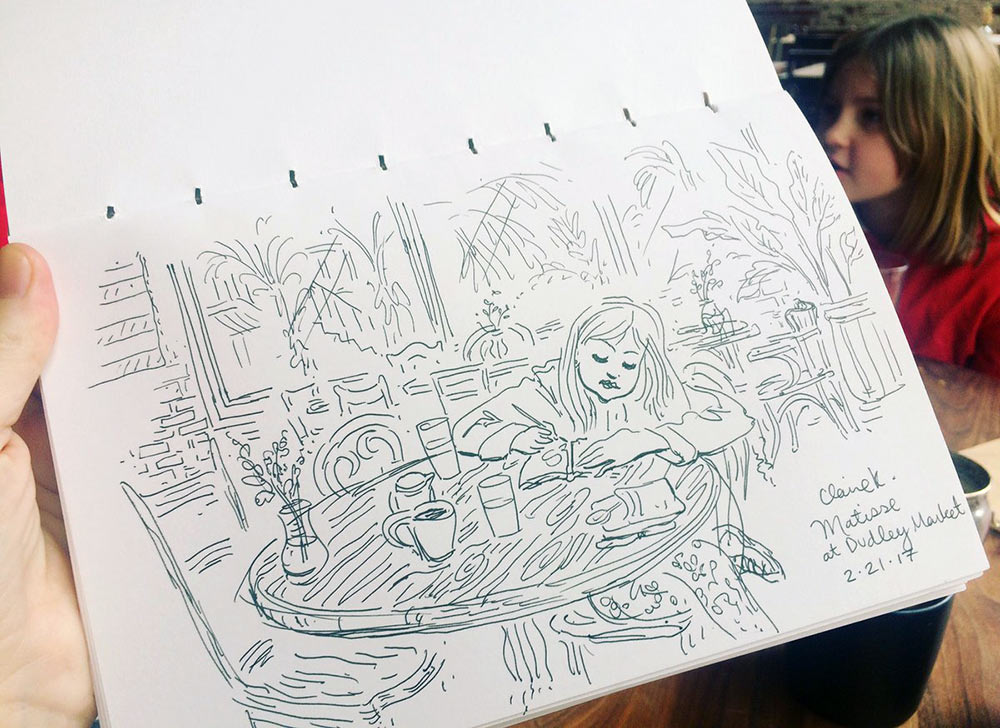
A strong work ethic
If anything, being a mom requires a strong work ethic. Kat Good recalled her daily routine as a director, coming home around 6:30pm, and sometimes 8pm, spending some time at home with her kids and husband, and then go on to work from home from 10 p.m. at night until 2 a.m. in the morning.
Still, there’s a tendency to think moms can’t work as hard as their colleagues. “That is sad to hear,” Aranovich said, “because it’s not true. I’ve taken work home so many times. I’ve worked late so many times. Even being a mother…I think people sometimes have preconceived ideas of what being a mother is. I think that they assume that you have so many limitations because you’re a mother. And you do have some limitations, but you usually learn to overcome them.”
Theofilopoulos expanded, “Most moms in animation – whether they’re just getting into the industry or they’re leaders – they would not be where they are if they didn’t have a good work ethic.”
“And I will tell you this,” Theofilopoulos continued in a joking tone. “Any mom who’s running a household [while holding a full-time job], can run a production. There are so many plates to spin. Your crew sometimes is gonna act like a baby, or they’re gonna whine, or you’re gonna have to talk to them like they’re a little kid, or they’re tired and probably need to go home and take a nap… It’s like your management of your household, and the crazy juggle that’s happening there when you have children – it’s a pretty similar skillset to managing a production. So I would bet that any mom could run a production pretty well.”
Actually, the unpredictability of home makes work seem more relaxed sometimes. “From when the kids wake up, everything is wild and it’s improv, until we get them to daycare,” Lambden said. “And then I get to work, and it feels calm compared to that.”
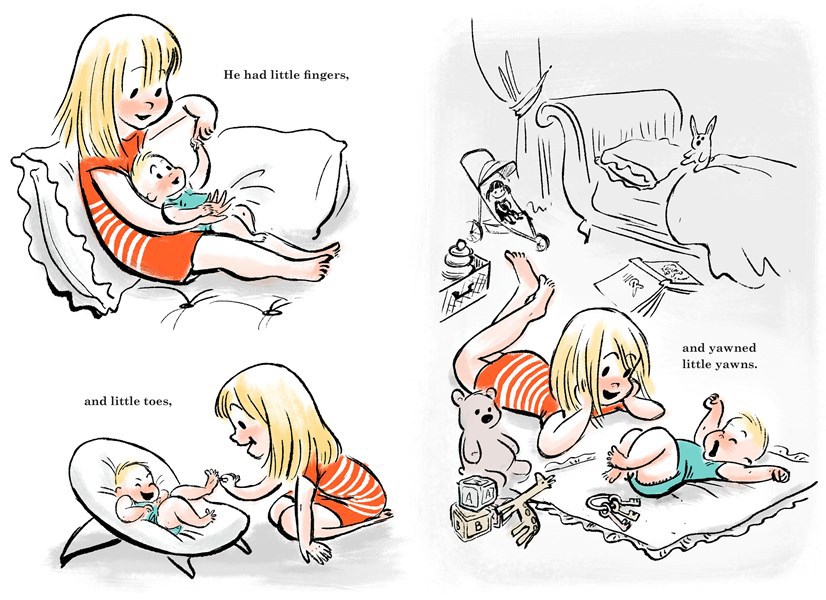
Women’s and moms’ voices results in better animation
It’s not only important for the women themselves to continue with and evolve in their careers – it’s important and beneficial for society and studios, too.
All voices matter when creating content, Theofilopoulos said, and the voice of a mother is another voice represented on a production. “Most moms aren’t walking around like, ‘I’m a mom! Representing my mom voice!’ It’s not that. It’s just about bringing our [crew’s] life experiences and our point of views together, so we can collectively represent a correct cross-section of who we’re speaking to: everyone.”
With Hollywood animation largely being a kids’ industry, it’s undeniably important for artists to understand their core audience. What’s a better way to learn to understand than having your core audience around you at home? “[Being a parent] definitely gives you a different sensibility towards what children find funny or appealing,” Aranovich said.
In fact, Chapman doesn’t think Pixar’s Brave would exist if she didn’t have a child. “Because I wouldn’t have the understanding that I needed to make that film. Or even have come up with the idea, I think.”
Ito, too, believes having kids eventually made her work deeper, especially when it comes to stories about parents. “You can sort of tell right away when something was written or set up by somebody that doesn’t actually know what it’s like to be a parent,” she said.
Lambden said her motherhood brought her a greater understanding and compassion for what other people may go through, which made her break out of her own stereotypes while animating. “I’m often called upon to help develop and animate other female characters. I feel a sense of responsibility to give them a truth, not just a stereotype…to introduce a layered character.”
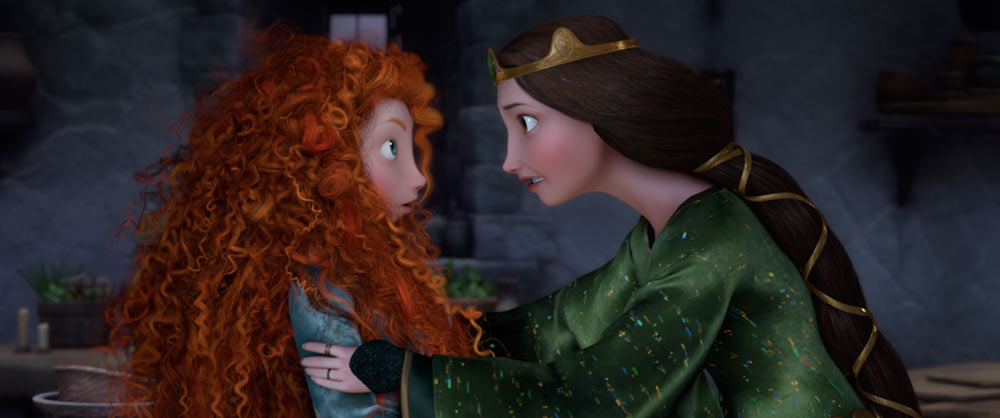
What moms need: A good life-work balance
Encouraging moms to stay in the animation workforce could be done by addressing some practical production issues, such as excessively long work hours at studios. Tackling the issue would, in fact, benefit the long-term health of all industry professionals, male and female.
“Everybody really puts on a tough exterior, like they’re all about work and there’s nothing else that matters,” Carol Wyatt shared. “[Studios] just need to be more cognizant of the fact that people should be going home and living a life…That should just be okay – for anybody, really. Go have fun! Go bowling, go out with your friends, go to a bar!”
Good recalled her time at DreamWorks in 2003, whose studio culture she described as heavily European-influenced. “These guys were like, ‘Is it six o’clock? You’re not paying me, I’m going home!’ Or ‘I’m not working on the weekend unless you pay me for that.’ And so they’d go out and they’d take dance classes with their wives, or go skydiving with their buddies, or they’d spend time with their kids. They were out living life, and then they’d come back on Monday and they’d pour all that passion, all that life, back into work. And it was, like, this awesome flow of energy that was happening.”
“And then I’d work at other places,” Good continued, “and people would be there 12 hours a day, in their little cubicle, slaving away, day after day. There’s no life, there’s not joy – they’re not bringing any of that. What can you bring to the table when all you do is sit at your desk and draw and watch Netflix? You need to go live life, and bring that life back to work. It makes for better stuff. Parenthood inspires you to pour stories of your children into your work. Well, how are you gonna get that if you didn’t spend time with them?”
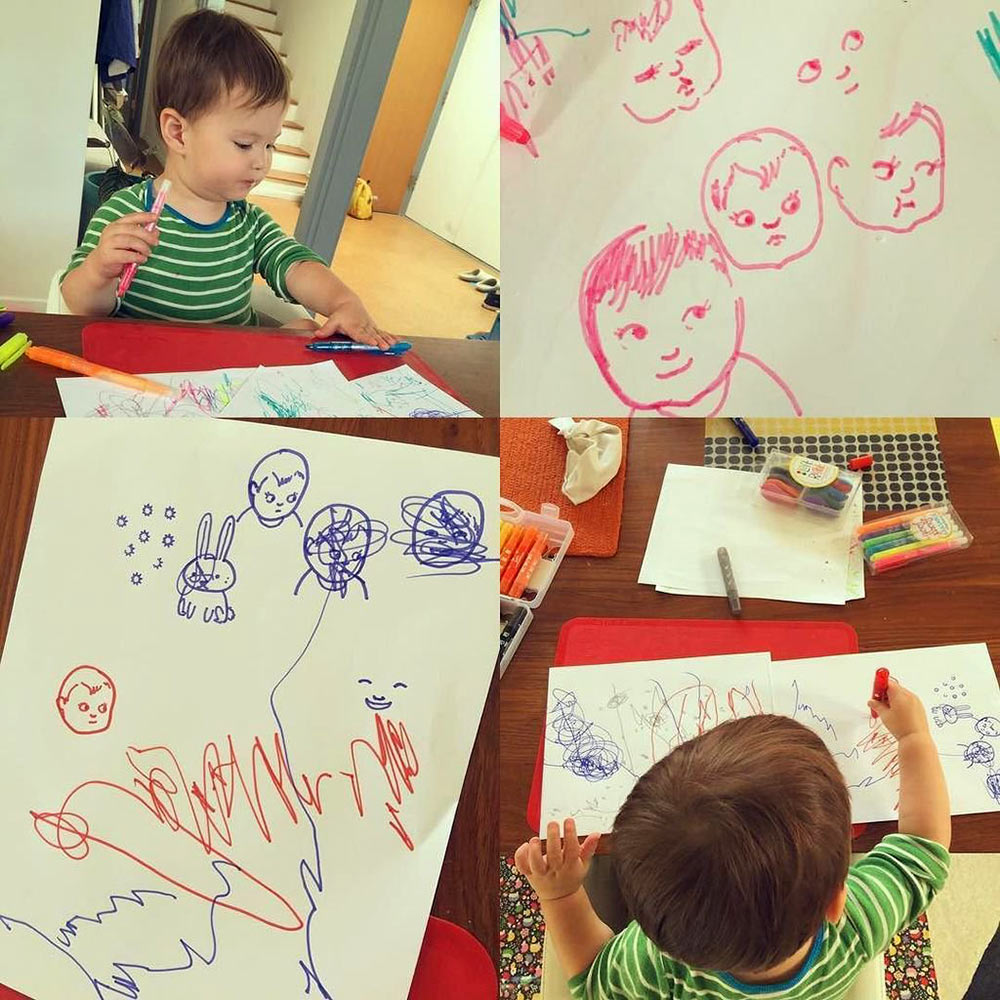
What moms need: Parenthood equality
Chapman recalled her time on Beauty and the Beast, when she shared an office with head of story Roger Allers, and he’d be gone at six o’clock or sometimes before, because he wanted to be at home with his young kids.
“At first I was like, ‘Ugh, what? Your wife’s at home,’” Chapman said. “But then I realized, no, he’s a great dad. He loves his kids and he wants to be there for them. His example put things in perspective a little bit more. This is a couple that is raising a child, not just the mom.”
Claire Keane reinforced that idea: “The time that we give mothers, we should be giving to the fathers as well. That will help all the moms, because their husbands will be taking part in raising the kids, rather than it being on the mom finding a nanny to replace her.”
Both society and private companies embracing equality in parenthood is key to having moms remain – and climb up – in the field.
What moms need: More flexibility in both production and hiring
All moms agreed that the option to work part-time or freelance, a level of flexibility in hours, and freedom as to where one works are key to keeping moms in the workforce. Chapman explains, “So many of the big studios are used to having everyone come in and work onsite… But I mean, if [artists] hit their deadlines, who cares when they’re working, as long as they get the work done. I think [studios] need to have a little trust in that.”
In the HR process, it’d help if testing for jobs wouldn’t be required all the time, Wyatt said. “Because people like me, there’s just no way I can take a test. There’s no time. All [HR] has to do is call people to ask what you’re like to work with. The testing is outrageous. I don’t know where people find the time to do it.”
Marge Dean, with the organization Women in Animation, recognizes the problem moms have with time, particularly to attend recruiting events. “We need to broaden the way that recruiting is done and talent is found,” she said. “And to be honest, most of the people I know who hire people are looking for other ways of finding talent, other than just rubbing elbows at some event.”
Dean further explained that in animation, where budgets and schedules are tight, it’s often difficult to make exceptions for people. “But I think that is part of what we need to do if we want to expand the inclusiveness of animation – not just moms, but any sort of inclusion. To bring in different kinds of people, we have to make changes to the normal way that we do things.”
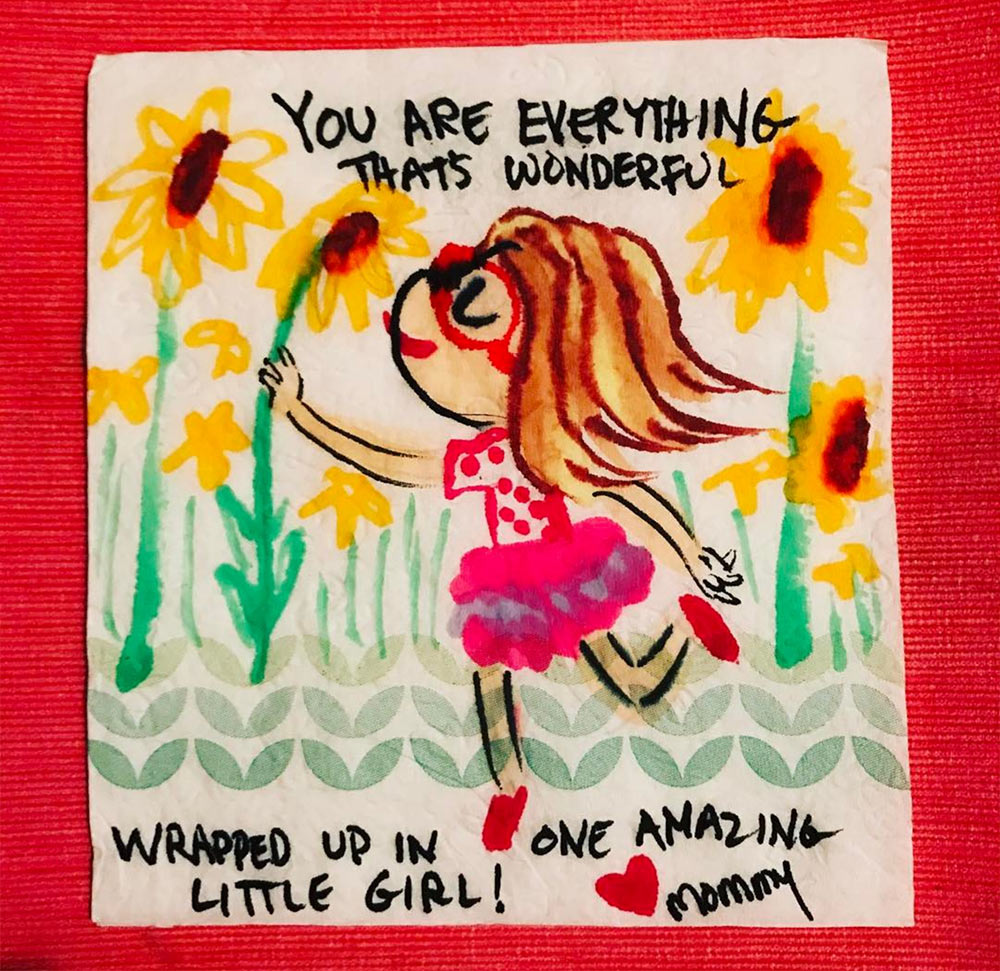
What moms need: Support from management and colleagues
Theofilopoulos stressed, “All [my] life experiences are going to be put into my work. So hopefully, whether I have to leave because my child’s Halloween parade is starting and maybe a pitch needs to be moved, or you have to leave because your boyfriend is graduating from college that day, we need to support the people that we work with. Whether it’s because they’re a parent or not. We just need to have an attitude of support.”
Dean added, “[Animation studios are] all about the kids… It would be very hypocritical for the animation industry to be really harsh and restrictive on parents when our audience is parents and kids.”
While California has a partially-paid maternity leave program set up, the way most studios support moms could be improved. Good added, “I don’t think [studios believe] that they’re not being supportive…but I don’t see that there’s an active initiative to do so.”
The moment of returning to the workforce might be the most critical. Dean said studios “have to allow time for women to come back and get back to the adult world, and to be able to function fully as they had before. I think people sometimes are not that accepting [of that], and then I also think it’s hard on the moms, because they’re like, ‘Ah, I used to be able to do this.’ They need to give themselves a break and some time to get back up to speed. So [studios putting] some thought into how to transition people back into the workforce is really critical.”
With returning to work full-time, it would help moms time-wise (and mommy guilt-wise) to be nearby their children. Dean shared, “A dream of mine is to have a child care center for animation or entertainment [industry]. I’d like it to be animation, just because we’re a small enough community. But to have something like that supported by all the studios. That’d be amazing. And making child care available at an affordable price or at a sliding scale would be fantastic. There’s a lot [studios] can do.”
In the meantime, it’d help if moms could feel more comfortable bringing their kids to work occasionally. Theofilopoulos recalled a Dreamworks bring-your-kids-to-work-day recently that “was really neat because those of us who are parents get to feel supported by the company. And the kids get to feel good, because they now know where their parents are going every day.”
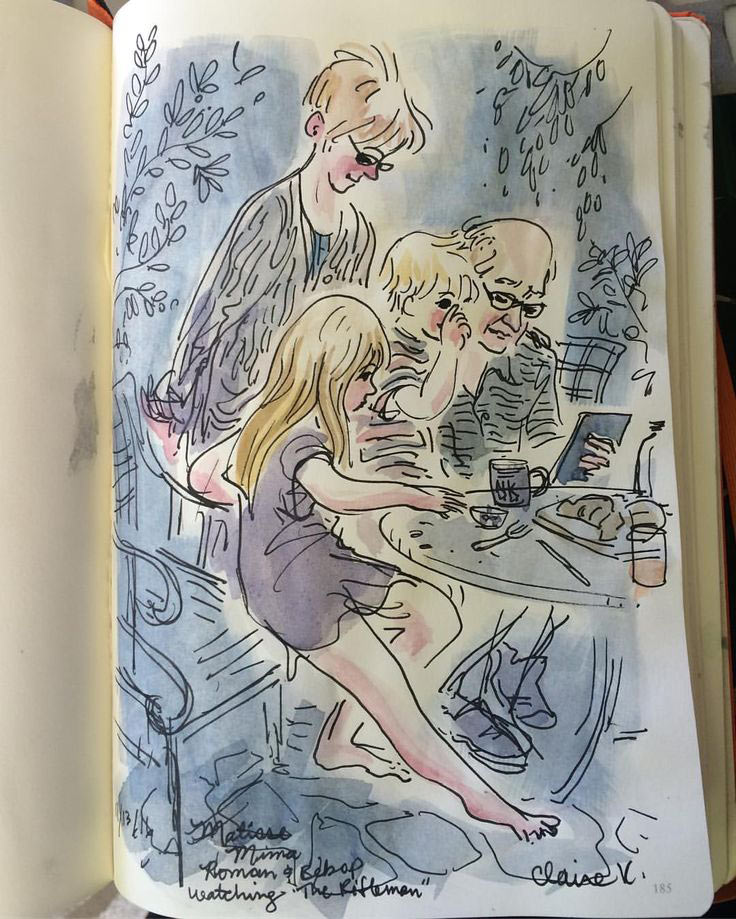
Quitting your career shouldn’t be one’s only option
While all moms emphasized that it’s perfectly okay for a woman to decide to stay at home, for a short or longer period of time, they stressed it shouldn’t be the only option.
“If your career is something that brings you personal fulfillment,” Keane said, “I’d really warn against giving it up. Because you want to be a full person when you have children, rather than someone who’s living only for your kids.”
Chapman agreed, saying work helped her feel valued outside of the house. “Because when you get to that point where you have the birth of the baby…everything is about that in that moment. It takes over your body and mind and all of that. And then when the baby is asleep and you’re sitting there by yourself, you’re going, ‘Am I worth anything else?’ So having work still, being connected to that, was very helpful.”
“I’d never quit my career because of [having] kids,” Theofilopoulos agreed. “It was my dream and my passion, and it still is. And I feel that when my kids grow into young adults, and they move on and start their lives, my career is the thing that I’m still going to have with me.”
Wyatt mentioned having a career in animation is tough either way. “You have to work really hard to stay in this business, whether you have kids or you don’t have kids.”
Dean firmly stated she doesn’t believe that there’s anything in the nature of being a mom, and in the nature of working in animation, that makes them mutually exclusive. “I think half of the struggle and the battle is that women are not believing that they actually have a choice [to continue working]. And I think they do.”
While difficult, it is essential that this conversation about motherhood takes place, both privately and publicly. First of all because it’s encouraging for women to hear from moms who are making it work. “When you see it in other women, when you see the physical example in front of you, it’s easier to imagine you yourself in that position,” Aranovich said.
Added Dean, “If we’d start talking about it more, we might actually be able to get some traction on the support that we need to have moms keep on working.”
Let’s not wait any longer, and start that public conversation right here, right now. Feel free to share your thoughts in the comments section (while keeping our commenting guidelines in mind).
